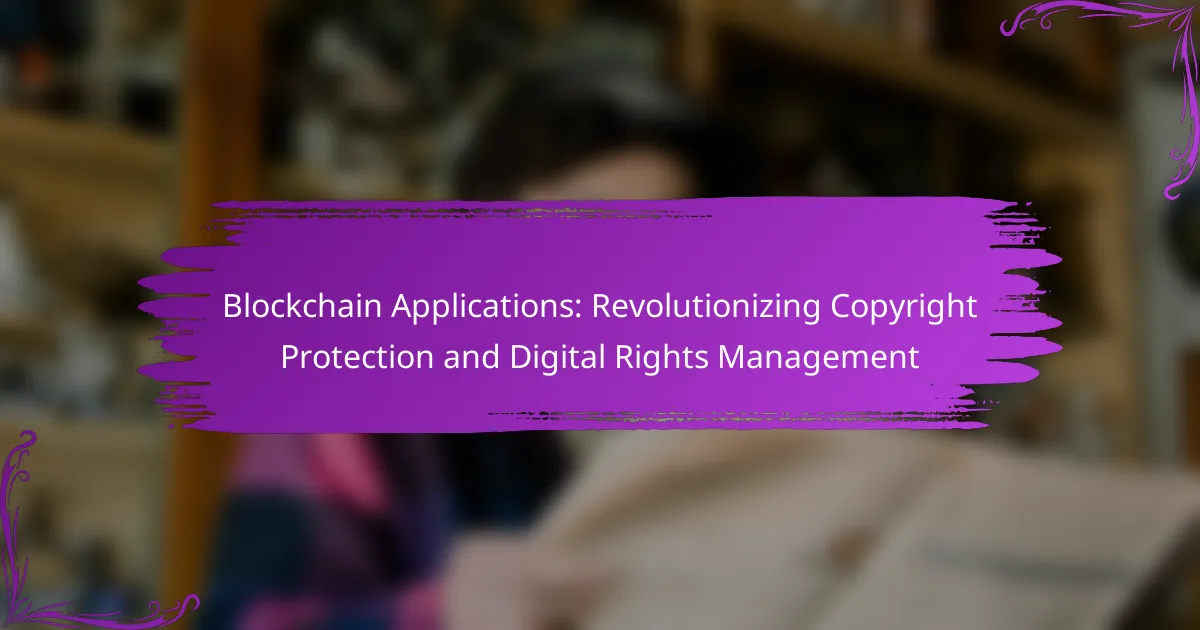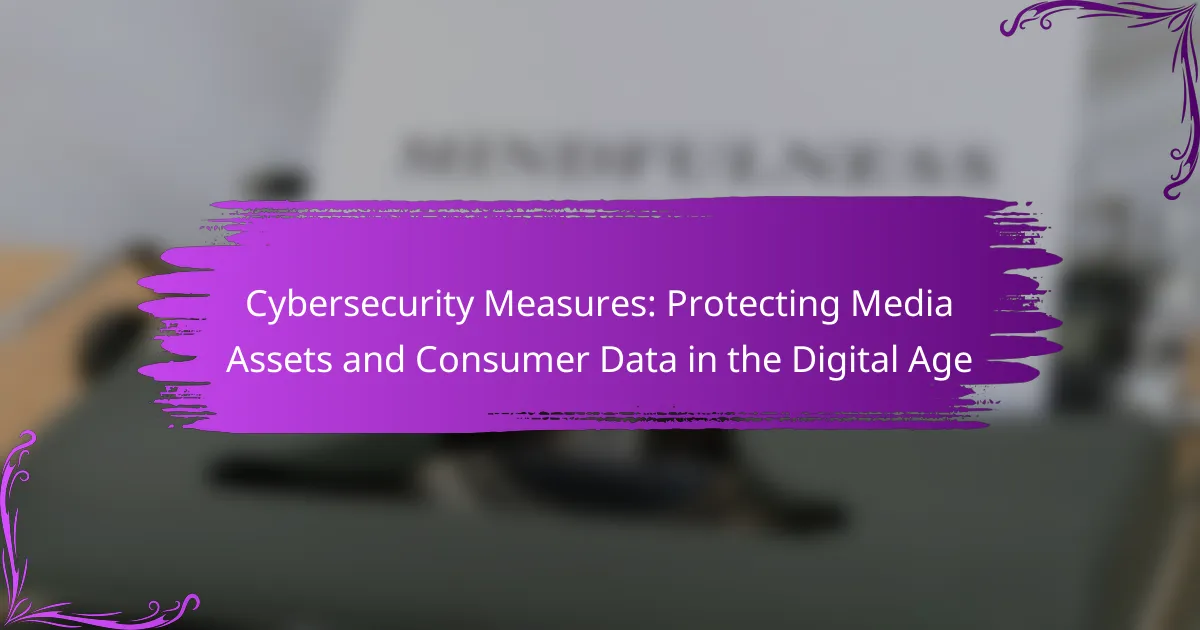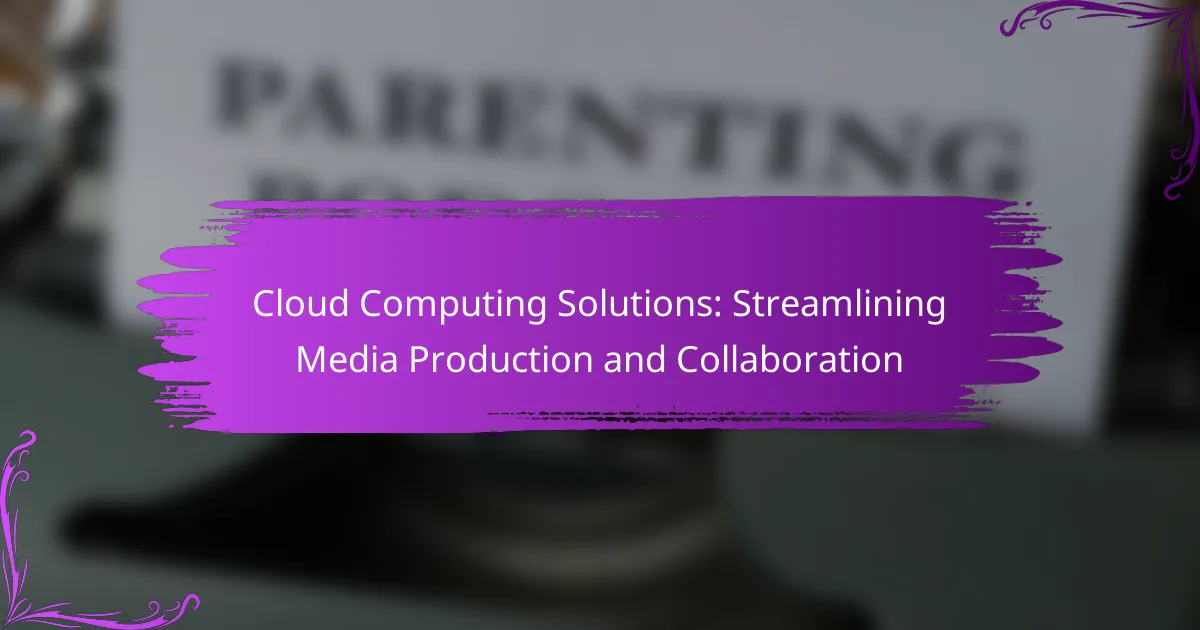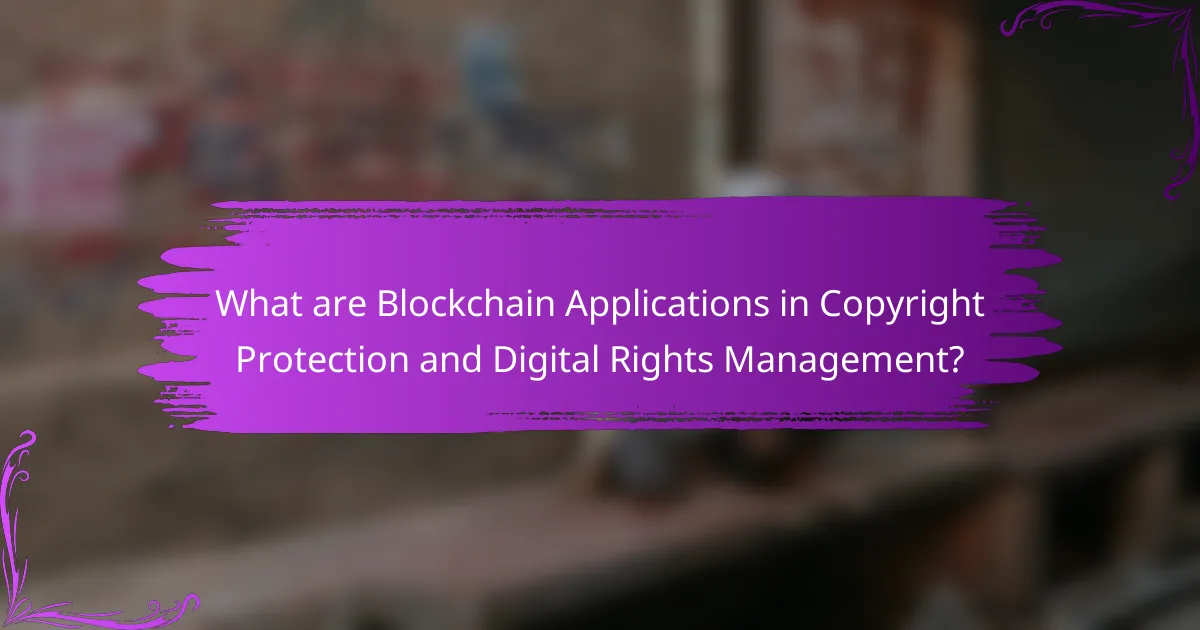
What are Blockchain Applications in Copyright Protection and Digital Rights Management?
Blockchain applications in copyright protection and digital rights management enhance the security and transparency of ownership. They provide immutable records of ownership and transaction history. This technology allows creators to register their works on a blockchain. Each entry is time-stamped and verifiable, ensuring authenticity. Smart contracts automate the licensing process, facilitating royalty distribution. This reduces the risk of unauthorized use and piracy. Studies show that blockchain can significantly lower transaction costs in rights management. For instance, the World Intellectual Property Organization recognizes blockchain’s potential in streamlining copyright processes.
How do Blockchain Applications enhance copyright protection?
Blockchain applications enhance copyright protection by providing a decentralized and immutable ledger for digital content. This technology allows creators to register their works on the blockchain, establishing clear ownership. Each transaction is time-stamped and cannot be altered, ensuring that copyright claims are verifiable. Smart contracts automate licensing agreements and royalty payments, reducing disputes over rights. Additionally, blockchain can track the usage of copyrighted material, ensuring that creators receive fair compensation. Research indicates that using blockchain for copyright management can significantly reduce infringement cases. The World Intellectual Property Organization has recognized blockchain’s potential in enhancing copyright systems globally.
What unique features of blockchain contribute to copyright security?
Blockchain’s unique features that contribute to copyright security include immutability, transparency, and decentralization. Immutability ensures that once a copyright record is added to the blockchain, it cannot be altered or deleted. This permanence protects the original creator’s rights and prevents unauthorized modifications. Transparency allows all participants in the blockchain network to view copyright records. This openness fosters trust and accountability among users. Decentralization removes the reliance on a single authority to manage copyright data. This reduces the risk of data manipulation or loss. Together, these features create a more secure environment for managing copyright and digital rights.
How does decentralization play a role in protecting digital rights?
Decentralization enhances the protection of digital rights by distributing control among multiple entities. This reduces the risk of censorship and data manipulation by a single authority. In a decentralized system, users maintain ownership of their data and digital assets. This ownership empowers individuals to control how their information is used and shared. Additionally, decentralized networks often employ encryption and blockchain technology. These technologies provide transparency and security, making unauthorized access more difficult. Research shows that decentralized platforms can effectively safeguard intellectual property rights. For instance, the use of blockchain in digital rights management has been proven to streamline copyright enforcement.
Why is Digital Rights Management important in the digital age?
Digital Rights Management (DRM) is crucial in the digital age to protect intellectual property. It prevents unauthorized access and distribution of digital content. DRM technologies help creators maintain control over their works. This control ensures that artists and companies receive fair compensation. In 2020, the global DRM market was valued at approximately $2.4 billion. It is projected to grow due to increasing digital content consumption. Moreover, DRM mitigates piracy, which can severely impact revenue streams. By securing digital assets, DRM fosters innovation and creativity in various industries.
What challenges does traditional Digital Rights Management face?
Traditional Digital Rights Management (DRM) faces several challenges. One significant challenge is the ease of content piracy. Despite DRM measures, unauthorized copying and distribution of digital content continue to occur. Another challenge is user dissatisfaction. Many users find DRM restrictions frustrating, limiting their ability to use purchased content freely. Additionally, DRM technologies can be circumvented by skilled hackers. This undermines the effectiveness of traditional DRM solutions. Compatibility issues also arise, as DRM systems may not work across different devices and platforms. Furthermore, the implementation of DRM can lead to increased costs for content providers. This can discourage smaller creators from utilizing DRM solutions. Overall, these challenges hinder the effectiveness of traditional DRM in protecting digital content.
How can blockchain address these challenges effectively?
Blockchain can address copyright protection and digital rights management challenges effectively by providing a secure and transparent ledger for ownership records. This technology allows creators to register their works on an immutable platform. Each entry includes essential details like ownership, timestamps, and usage rights.
Smart contracts automate licensing agreements and payments, reducing disputes and ensuring creators receive fair compensation. According to a report by the World Economic Forum, blockchain can streamline royalty distribution by tracking usage in real-time. This enhances accountability and minimizes fraud in the digital content ecosystem.
Additionally, blockchain’s decentralized nature reduces reliance on intermediaries, empowering creators and increasing their control over their intellectual property. These features collectively enhance the protection and management of digital rights in a rapidly evolving digital landscape.
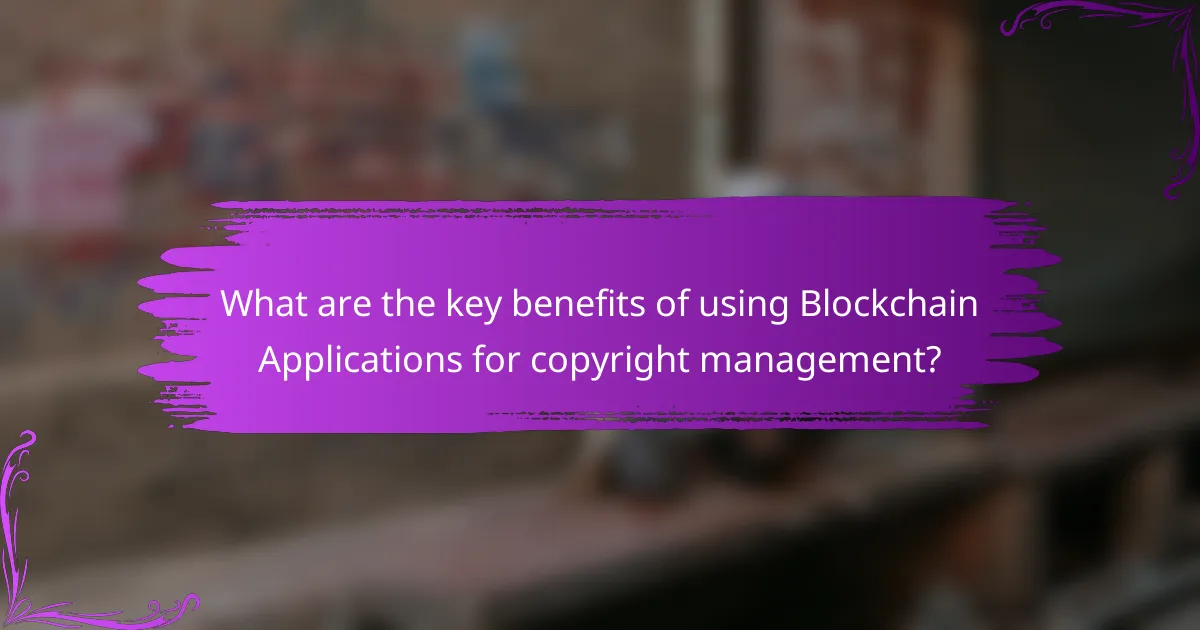
What are the key benefits of using Blockchain Applications for copyright management?
Blockchain applications offer enhanced transparency, security, and efficiency for copyright management. They provide a decentralized ledger that records ownership and usage rights immutably. This transparency helps prevent disputes over authorship and usage. Smart contracts automate licensing agreements, reducing administrative burdens. Additionally, blockchain allows for real-time tracking of content usage, ensuring creators receive fair compensation. The technology also minimizes the risk of copyright infringement by making it easier to verify ownership. According to a study by the World Intellectual Property Organization, blockchain can significantly streamline copyright processes, benefiting both creators and consumers.
How do Blockchain Applications ensure transparency in copyright ownership?
Blockchain applications ensure transparency in copyright ownership by creating immutable records of ownership and transactions. Each copyright registration is stored as a unique digital asset on the blockchain. This record is accessible to all participants in the network, allowing for real-time verification of ownership. Smart contracts automate the enforcement of copyright terms and conditions. These contracts execute actions when predefined conditions are met, ensuring compliance. The decentralized nature of blockchain prevents unauthorized alterations to ownership records. This transparency reduces disputes by providing a clear, traceable history of ownership. Studies show that blockchain can significantly enhance trust in digital rights management systems.
What mechanisms are in place to verify ownership through blockchain?
Blockchain utilizes several mechanisms to verify ownership. These mechanisms include cryptographic hashing, decentralized ledgers, and smart contracts. Cryptographic hashing ensures that each transaction is securely linked to the previous one. This creates an immutable record of ownership. Decentralized ledgers distribute ownership records across multiple nodes. This prevents any single entity from altering the ownership data. Smart contracts automate the transfer of ownership upon meeting predefined conditions. This adds an additional layer of verification. Together, these mechanisms enhance the trust and transparency of ownership verification in blockchain applications.
How does transparency affect disputes in copyright claims?
Transparency reduces disputes in copyright claims by providing clear, accessible records of ownership and usage. Blockchain technology enables this transparency through immutable ledgers. These ledgers allow all parties to verify the history of a copyright claim. When ownership is clearly documented, it minimizes the potential for misunderstandings. Transparency also facilitates quicker resolutions to disputes. It allows for real-time access to information regarding rights and permissions. Studies show that clearer documentation leads to fewer legal conflicts. Thus, transparency through blockchain enhances trust among creators and users.
What cost savings can Blockchain Applications provide for copyright holders?
Blockchain applications can provide significant cost savings for copyright holders by reducing intermediary fees. Traditional copyright management often involves multiple intermediaries, which can lead to high transaction costs. Blockchain technology enables direct transactions between creators and consumers, eliminating the need for those intermediaries.
Additionally, blockchain facilitates automated royalty payments through smart contracts. These contracts execute payments instantly upon usage, minimizing delays and administrative expenses. A study by the World Economic Forum noted that blockchain could save the copyright industry up to $5 billion annually by streamlining processes.
Furthermore, blockchain enhances transparency in ownership tracking. This reduces disputes over copyright claims, which can be costly to resolve. The immutable nature of blockchain records also decreases the risk of fraud, saving money on legal fees. Overall, these factors contribute to significant cost reductions for copyright holders.
How does blockchain reduce administrative costs for creators?
Blockchain reduces administrative costs for creators by automating transactions and eliminating intermediaries. Smart contracts facilitate direct agreements between creators and consumers. This reduces the need for legal oversight and manual processing. Consequently, fewer resources are spent on administrative tasks. Blockchain’s decentralized ledger ensures transparency and accuracy in record-keeping. This minimizes disputes and the costs associated with resolving them. Additionally, creators retain more revenue as middlemen fees are diminished. Studies show that blockchain can lower transaction costs by up to 90% in certain industries.
What are the long-term financial benefits of adopting blockchain for copyright management?
The long-term financial benefits of adopting blockchain for copyright management include reduced administrative costs and enhanced revenue streams. Blockchain technology automates processes such as licensing and royalty distribution. This automation minimizes the need for intermediaries, which can significantly lower transaction fees.
Additionally, blockchain provides transparent tracking of ownership and usage rights. This transparency can lead to quicker and more accurate payments to creators. Studies show that artists can receive up to 90% of revenue directly through blockchain platforms, compared to traditional models where they may receive only 10-20%.
Moreover, the immutable nature of blockchain records protects against copyright infringement. This protection can reduce potential legal costs associated with disputes. Overall, these factors contribute to a more efficient and financially beneficial copyright management system.
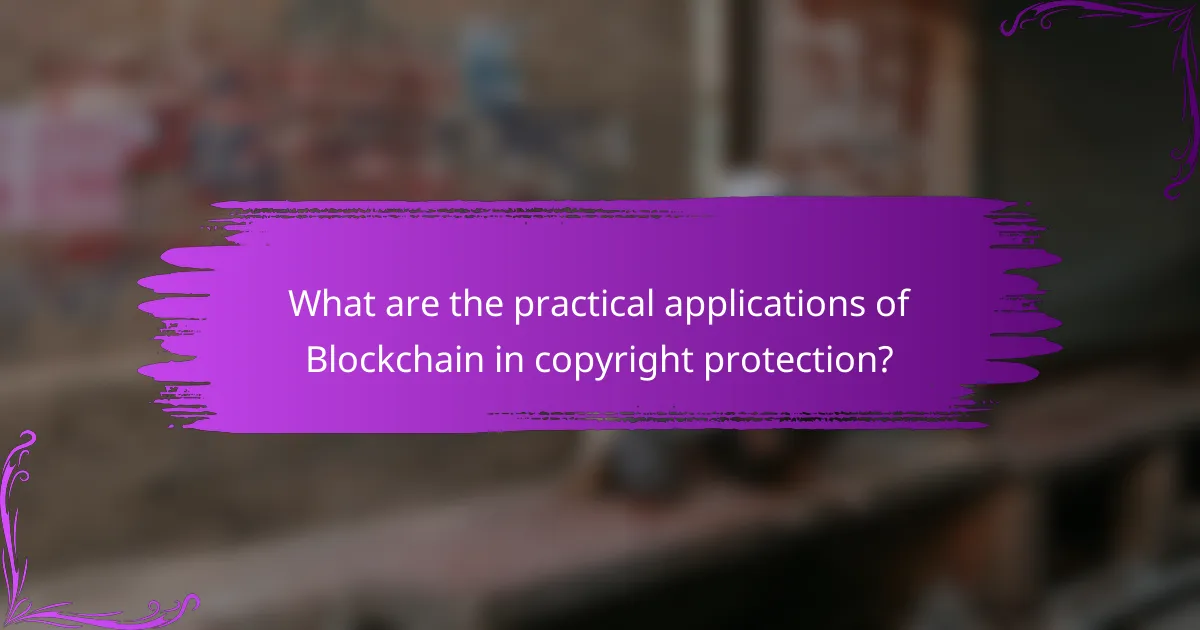
What are the practical applications of Blockchain in copyright protection?
Blockchain technology provides practical applications in copyright protection by enabling secure and verifiable ownership records. It allows creators to register their works on a decentralized ledger. This ensures that ownership is transparent and immutable. Smart contracts can automate licensing agreements, reducing the risk of infringement. Blockchain facilitates real-time tracking of usage and distribution. This helps in identifying unauthorized use of copyrighted materials. Additionally, it streamlines royalty payments, ensuring creators receive fair compensation. Research indicates that blockchain can significantly reduce piracy by providing clear proof of ownership.
How are artists and creators using Blockchain Applications today?
Artists and creators are using blockchain applications to secure their intellectual property and manage digital rights. They leverage smart contracts to automate licensing agreements. This ensures that artists receive royalties automatically when their work is used. Blockchain technology provides a transparent ledger, allowing creators to track the usage of their content. Platforms like OpenSea and Rarible enable artists to mint non-fungible tokens (NFTs) of their work. This gives them ownership and authenticity verification. Moreover, blockchain reduces the risk of piracy by verifying originality. As of 2023, the NFT market has generated billions in sales, underscoring its impact on the creative industry.
What examples exist of successful blockchain implementations in copyright protection?
Successful blockchain implementations in copyright protection include platforms like Myco, Po.et, and Ascribe. Myco enables creators to register their works on a blockchain, ensuring proof of ownership. Po.et provides a decentralized protocol for managing digital content, allowing authors to timestamp and verify their works. Ascribe allows artists to issue and track ownership of digital art via blockchain technology. These platforms demonstrate the ability of blockchain to secure copyright claims and streamline rights management.
How does smart contract technology facilitate digital rights management?
Smart contract technology facilitates digital rights management by automating the enforcement of copyright agreements. It ensures that creators receive royalties automatically upon the use of their work. Smart contracts operate on blockchain, providing a transparent and immutable record of ownership. This reduces the chances of copyright infringement and unauthorized use. Additionally, they enable real-time tracking of usage data, enhancing accountability. According to a study by the World Intellectual Property Organization, blockchain can significantly streamline licensing processes. Therefore, smart contracts enhance trust and efficiency in managing digital rights.
What industries are most impacted by Blockchain Applications in copyright management?
The industries most impacted by blockchain applications in copyright management are music, publishing, film, and art. In the music industry, blockchain ensures transparent royalty distribution and tracks ownership rights. The publishing industry benefits from secure digital rights management, protecting authors and publishers from piracy. In film, blockchain facilitates fair revenue sharing among creators and producers. The art industry utilizes blockchain for provenance tracking, ensuring authenticity of artworks. These applications enhance trust, reduce disputes, and streamline the management of intellectual property across these sectors.
How is the music industry leveraging blockchain for copyright protection?
The music industry is leveraging blockchain technology to enhance copyright protection. Blockchain provides a decentralized ledger that securely records ownership and usage rights of music. This technology enables artists to register their works directly on the blockchain. Each transaction is timestamped and immutable, ensuring transparency and traceability. Smart contracts automate royalty payments, ensuring artists receive fair compensation. Platforms like Audius and Ujo Music utilize blockchain for these purposes. Studies indicate that blockchain can reduce piracy and unauthorized use of music. This approach empowers artists by giving them greater control over their intellectual property.
What role does blockchain play in the film and publishing sectors?
Blockchain provides a decentralized platform for secure transactions and data storage in the film and publishing sectors. It enables transparent tracking of ownership and distribution rights. This technology allows creators to maintain control over their intellectual property. Smart contracts automate royalty payments, ensuring timely compensation for artists. Blockchain also reduces piracy by verifying the authenticity of digital content. According to a report by Deloitte, blockchain can enhance trust among stakeholders in these industries. It fosters direct relationships between creators and consumers, minimizing intermediaries. This innovation is revolutionizing copyright protection and digital rights management.
What best practices should creators follow when using Blockchain Applications?
Creators should follow several best practices when using Blockchain applications. First, they should ensure they understand the technology and its implications. Knowledge of blockchain fundamentals is crucial for effective usage. Second, creators should choose the right blockchain platform that aligns with their goals. Different platforms offer varying features and capabilities. Third, they must prioritize security by using strong passwords and enabling two-factor authentication. Security breaches can lead to significant losses. Fourth, creators should keep thorough records of their digital assets and transactions. This practice aids in transparency and accountability. Fifth, they should engage with the community for support and updates. Active participation can lead to valuable insights and collaborations. Lastly, staying informed about legal regulations is vital. Compliance with laws ensures the protection of creators’ rights and assets.
How can creators effectively manage their digital rights with blockchain technology?
Creators can effectively manage their digital rights with blockchain technology by utilizing smart contracts. Smart contracts automate the enforcement of copyright agreements. They ensure that creators receive payments automatically when their work is used. Blockchain provides a transparent and immutable ledger for ownership records. This transparency reduces disputes over copyright claims. Additionally, blockchain enables creators to track the usage of their works in real-time. Data from the blockchain can verify the authenticity and provenance of digital content. Overall, these features empower creators to maintain control over their intellectual property.
What common pitfalls should be avoided when implementing blockchain for copyright protection?
Common pitfalls to avoid when implementing blockchain for copyright protection include inadequate understanding of blockchain technology. Organizations must ensure they comprehend its functionalities and limitations. Lack of clarity in smart contract design can lead to disputes. Clear and precise terms should be established within contracts to prevent ambiguity.
Failing to consider legal implications can result in non-compliance with copyright laws. It’s crucial to align blockchain solutions with existing regulations. Poor user adoption can undermine effectiveness. Engaging stakeholders early in the process can enhance acceptance and use.
Ignoring interoperability with existing systems can create integration challenges. Solutions should be designed to work seamlessly with current copyright management systems. Lastly, overlooking data privacy concerns can lead to vulnerabilities. Implementing robust security measures is essential to protect sensitive information.
Blockchain applications serve as a transformative entity in copyright protection and digital rights management, enhancing ownership security and transparency. The article outlines how blockchain’s immutable records and smart contracts automate licensing, reduce piracy, and streamline royalty distribution, ultimately benefiting creators and consumers alike. Key features such as decentralization and transparency are discussed, emphasizing their role in verifying ownership and minimizing disputes. Additionally, practical applications across industries like music, publishing, and art illustrate blockchain’s impact on managing digital rights effectively. The article also highlights best practices for creators to optimize their use of blockchain technology while avoiding common pitfalls.
